Passive Acoustic Deterrents
WHAT ARE PASSIVE ACOUSTIC DETERRENTS?
Passive acoustic deterrents use air-filled, metallic or other components incorporated into fishing gear, in order to increase the density of gear and thus its ‘acoustic reflectivity’. Acoustic reflectivity refers to the tendency of a material to deflect sound energy, rather than absorb it. Cetaceans navigate their surroundings by emitting sounds and locating objects as these sounds are reflected, in a process known as echolocation. By increasing acoustic reflectivity, marine mammals are more able to detect and avoid fishing gear.
There are various examples of passive acoustic deterrents: either objects with strong ‘echo properties’ can be added to gear; or netting itself can be modified, for example by using a different kind of filament. A common example is metal oxide nets, which are made from nylon that has been impregnated with barium sulphate or other metal compounds.
CURRENT RESEARCH & USE
At-sea trials in the Danish North Sea bottom set gillnet fishery between September – October 2000 found that harbour porpoise bycatch was significantly reduced by the use of high-density iron-oxide gillnets. Trials were also undertaken between October 2002 and September 2003 of six gillnet fleets in Yorkshire – three barium sulphate nets and three standard skate nets. Conversely, bycatch rates of both porpoise and seal were higher in the barium sulphate net than in the normal nets. However, results may have been due to the barium sulphate nets having a slightly smaller mesh size and thicker twine, thus being harder for marine mammals to escape from.
Trials in an eastern Canada demersal gillnet fishery found that barium sulphate nets reduced the bycatch of harbour porpoise, without decreasing target catch of pollack, cod, and haddock. It remains unclear as to whether acoustic reflectivity, or the increased ‘stiffness’ of metal oxide nets (which are thus easier to ‘bounce’ off), were responsible for the results. Bycatch of greater shearwater was also reduced by metal oxide nets, potentially due to their increased visibility.
The Passive Porpoise Deterrent, a novel device developed by Aquatec Group Ltd., combines resonant acoustic reflectors with a small number of pingers to reduce harbour porpoise bycatch in gillnet fisheries. The reflectors are fitted to nets every five metres. When an echolocating porpoise emits a click, the reflectors transmit back a stronger echo, making the reflectors appear to the porpoise to be much larger objects than they are. Research also suggests that custom-made acrylic glass pearls attached in rows to fishing nets may decrease the risk of entanglement of harbour porpoises and potentially other cetaceans, as they increase the acoustic detectability of the gillnets. Finally, Clean Catch UK in partnership with Arribada Initiative is currently developing a Passive Acoustic Reflector (PAR) device which is designed to replace standard headline floats on static.
A 2020 study set out to systematically test the ‘target strength’ (TS) (a measure of acoustic reflectivity) of a number of different objects and materials that are used as passive acoustic deterrents. The study found that 8 mm acrylic glass spheres attached to the net at intervals smaller than 0.5 m s have the same TS – at 130 kHz – as the most recognisable part of a gillnet, the floatline. The study also suggested that modifications of the netting material – such as using barium sulphate additives – do not substantially increase the acoustic reflectivity of the net.
This page was last updated on 20.12.22.
Interested in how this and other measures could mitigate bycatch in your fishery? Get in touch with us to collaborate or take part in a study.
